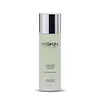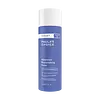What's inside
What's inside
 Key Ingredients
Key Ingredients

 Benefits
Benefits

 Concerns
Concerns

 Ingredients Side-by-side
Ingredients Side-by-side

Water
Skin ConditioningGlycerin
HumectantSorbitol
HumectantPolysorbate 20
EmulsifyingBenzyl Alcohol
PerfumingMacrocystis Pyrifera Extract
Skin ConditioningTartaric Acid
BufferingAloe Barbadensis Leaf Extract
EmollientTetrahexyldecyl Ascorbate
AntioxidantXanthan Gum
EmulsifyingPEG-20 Glyceryl Laurate
EmulsifyingMaltodextrin
AbsorbentSodium Hydroxide
BufferingRetinyl Palmitate
Skin ConditioningAesculus Hippocastanum Seed Extract
Skin ConditioningDisodium EDTA
Tocopherol
AntioxidantLinoleic Acid
CleansingAcetyl Cysteine
AntioxidantPhenoxyethanol
PreservativeDiethylhexyl Syringylidenemalonate
Skin ProtectingCaprylic/Capric Triglyceride
MaskingSodium Carbonate
BufferingSodium Chloride
MaskingCI 75810
Cosmetic ColorantSodium Ascorbyl Phosphate
AntioxidantParfum
MaskingWater, Glycerin, Sorbitol, Polysorbate 20, Benzyl Alcohol, Macrocystis Pyrifera Extract, Tartaric Acid, Aloe Barbadensis Leaf Extract, Tetrahexyldecyl Ascorbate, Xanthan Gum, PEG-20 Glyceryl Laurate, Maltodextrin, Sodium Hydroxide, Retinyl Palmitate, Aesculus Hippocastanum Seed Extract, Disodium EDTA, Tocopherol, Linoleic Acid, Acetyl Cysteine, Phenoxyethanol, Diethylhexyl Syringylidenemalonate, Caprylic/Capric Triglyceride, Sodium Carbonate, Sodium Chloride, CI 75810, Sodium Ascorbyl Phosphate, Parfum
Water
Skin ConditioningCyclopentasiloxane
EmollientGlycerin
HumectantGlycereth-26
HumectantPolysorbate 20
EmulsifyingDimethiconol
EmollientLinoleic Acid
CleansingOleic Acid
EmollientLinolenic Acid
CleansingPhospholipids
Skin ConditioningCarnosine
Skin ConditioningEpigallocatechin Gallate
AntioxidantGenistein
Skin ConditioningSodium Hyaluronate
HumectantSphingolipids
EmollientFerulic Acid
AntimicrobialLaurdimonium Hydroxypropyl Hydrolyzed Soy Protein
Glycyrrhiza Glabra Root Extract
BleachingAcetyl Glucosamine
Skin ConditioningQuercetin
AntioxidantOenothera Biennis Oil
EmollientBeta Vulgaris Root Extract
Skin ConditioningCucurbita Pepo Seed Extract
Skin ConditioningLecithin
EmollientCaprylic/Capric Triglyceride
MaskingHydrolyzed Corn Starch
HumectantHydrogenated Lecithin
EmulsifyingPalmitic Acid
EmollientButylene Glycol
HumectantAcrylates/C10-30 Alkyl Acrylate Crosspolymer
Emulsion StabilisingXanthan Gum
EmulsifyingLaureth-23
CleansingLaureth-4
EmulsifyingAminomethyl Propanol
BufferingDisodium EDTA
Sodium Benzoate
MaskingEthylhexylglycerin
Skin ConditioningPhenoxyethanol
PreservativeChlorphenesin
AntimicrobialBenzoic Acid
MaskingSorbic Acid
PreservativeWater, Cyclopentasiloxane, Glycerin, Glycereth-26, Polysorbate 20, Dimethiconol, Linoleic Acid, Oleic Acid, Linolenic Acid, Phospholipids, Carnosine, Epigallocatechin Gallate, Genistein, Sodium Hyaluronate, Sphingolipids, Ferulic Acid, Laurdimonium Hydroxypropyl Hydrolyzed Soy Protein, Glycyrrhiza Glabra Root Extract, Acetyl Glucosamine, Quercetin, Oenothera Biennis Oil, Beta Vulgaris Root Extract, Cucurbita Pepo Seed Extract, Lecithin, Caprylic/Capric Triglyceride, Hydrolyzed Corn Starch, Hydrogenated Lecithin, Palmitic Acid, Butylene Glycol, Acrylates/C10-30 Alkyl Acrylate Crosspolymer, Xanthan Gum, Laureth-23, Laureth-4, Aminomethyl Propanol, Disodium EDTA, Sodium Benzoate, Ethylhexylglycerin, Phenoxyethanol, Chlorphenesin, Benzoic Acid, Sorbic Acid
Ingredients Explained
These ingredients are found in both products.
Ingredients higher up in an ingredient list are typically present in a larger amount.
This ingredient is an emollient, solvent, and texture enhancer. It is considered a skin-softener by helping the skin prevent moisture loss.
It helps thicken a product's formula and makes it easier to spread by dissolving clumping compounds.
Caprylic Triglyceride is made by combining glycerin with coconut oil, forming a clear liquid.
While there is an assumption Caprylic Triglyceride can clog pores due to it being derived from coconut oil, there is no research supporting this.
Learn more about Caprylic/Capric TriglycerideDisodium EDTA plays a role in making products more stable by aiding other preservatives.
It is a chelating agent, meaning it neutralizes metal ions that may be found in a product.
Disodium EDTA is a salt of edetic acid and is found to be safe in cosmetic ingredients.
Learn more about Disodium EDTAGlycerin is already naturally found in your skin. It helps moisturize and protect your skin.
A study from 2016 found glycerin to be more effective as a humectant than AHAs and hyaluronic acid.
As a humectant, it helps the skin stay hydrated by pulling moisture to your skin. The low molecular weight of glycerin allows it to pull moisture into the deeper layers of your skin.
Hydrated skin improves your skin barrier; Your skin barrier helps protect against irritants and bacteria.
Glycerin has also been found to have antimicrobial and antiviral properties. Due to these properties, glycerin is often used in wound and burn treatments.
In cosmetics, glycerin is usually derived from plants such as soybean or palm. However, it can also be sourced from animals, such as tallow or animal fat.
This ingredient is organic, colorless, odorless, and non-toxic.
Glycerin is the name for this ingredient in American English. British English uses Glycerol/Glycerine.
Learn more about GlycerinLinoleic Acid is also known as Vitamin F. It is a fatty acid with emollient and skin conditioning properties. Our top layer of skin, or epidermis, contains high amounts of linoleic acid naturally.
Your body uses linoleic acid to build ceramides and prostaglandins. Ceramides keep your skin's barrier hydrated and strong while prosaglandins help control inflammation and healing. Needless to say, linoleic acid is crucial for having a strong skin barrier.
One study found applying linoleic acid rich sunflower oil to be more effective at repairing the skin barrier than oleic rich olive oil.
Linoleic acid is an essential fatty acid, meaning our bodies cannot create it on its own. We need to get linoleic acid through foods such as nuts and vegetable oils.
Acne-prone skin tends to have linoleic acid and high levels of oleic acid.
Linoleic acid can also help treat acne by softening sebum to prevent clogged pores. Another study found using 2.5% linoleic acid gel for 4 weeks showed a 25% reduction in small comedones.
This ingredient can also help lighten hyperpigmentation or sun spots by disrupting the melanin production process. It also helps your skin shed melanin pigment from your skin caused by UV exposure.
Due to its role in the production of the fatty acid prostaglandin, linoleic acid can also help reduce inflammation and support wound healing.
Linoleic acid is not always fungal-acne safe; it may trigger flare-ups in sensitive individuals.
Learn more about Linoleic AcidPhenoxyethanol is a preservative that has germicide, antimicrobial, and aromatic properties. Studies show that phenoxyethanol can prevent microbial growth. By itself, it has a scent that is similar to that of a rose.
It's often used in formulations along with Caprylyl Glycol to preserve the shelf life of products.
Polysorbate 20 is made by combining ethoxylation of sorbitan, ethylene oxide, and lauric acid. It is a mild cleansing agent, surfactant, and emulsifier.
As a surfactant, it helps collect dirt and oils for washing. Emulsifiers prevent oils and water from separating.
Polysorbate 20 also adds scent to a product. Since it is made using sorbitol, it has a sweet scent. Sorbitol can also be found in fruits such as apples and peaches.
The lauric acid used to create Polysorbate 20 is often derived from coconuts.
Polysorbate 20 may not be fungal acne safe.
Learn more about Polysorbate 20Water. It's the most common cosmetic ingredient of all. You'll usually see it at the top of ingredient lists, meaning that it makes up the largest part of the product.
So why is it so popular? Water most often acts as a solvent - this means that it helps dissolve other ingredients into the formulation.
You'll also recognize water as that liquid we all need to stay alive. If you see this, drink a glass of water. Stay hydrated!
Learn more about WaterXanthan gum is used as a stabilizer and thickener within cosmetic products. It helps give products a sticky, thick feeling - preventing them from being too runny.
On the technical side of things, xanthan gum is a polysaccharide - a combination consisting of multiple sugar molecules bonded together.
Xanthan gum is a pretty common and great ingredient. It is a natural, non-toxic, non-irritating ingredient that is also commonly used in food products.
Learn more about Xanthan Gum